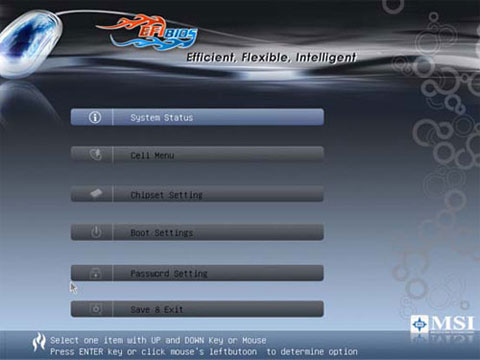Depending on your background you may hate the BIOS, you may completely disregard its existence, or perhaps you have grown accustomed to it and learned how to tweak it. The motherboard BIOS has evolved over the last decade to accommodate many enthusiast-oriented settings, while at the same time it has changed very little.
This is certainly not the first time someone claims the BIOS as we know it is going the way of the dodo, and then nothing happens. Back in 2003 I wrote a short piece titled "Writing an end to the bio of BIOS," describing Intel and Microsoft's work on a replacement called EFI (Extensible Firmware Interface) that was set to become the new industry standard. Except for Itanium-based machines, Linux and Intel Macs, you know how that went for the average Windows computer.

Now MSI is claiming that a new revision of the same initiative (UEFI) will start to appear on motherboards before the end of the year, bringing a point-and-click interface to newer platforms beginning with Intel's upcoming Sandy Bridge chipset. UEFI is supposed to bring more flexibility compared to the aging BIOS, the former is developed in the C language while the legacy BIOS uses Assembly. But perhaps most importantly, storage giant Seagate has hinted that the adoption of UEFI will be "essential" for using hard drives larger than 2TB, a kind of limitation not seen before by the BIOS. Considering that 1TB hard drives are going for as low as $40 these days, it won't be long until multiple terabyte drives become mainstream.
Manufacturers have often claimed that EFI adds an unnecessary layer of complexity given the little improvements it brings, but in the era of 32nm transistors that can switch on and off over 300 billion times in one second, how difficult can this truly be? Without meaning to open the boot time floodgates, I'll just say I wish we already had an instant booting computer that welcomed you with a full resolution splash screen and not the legacy VGA-res boot screen we've been looking at for over two decades.